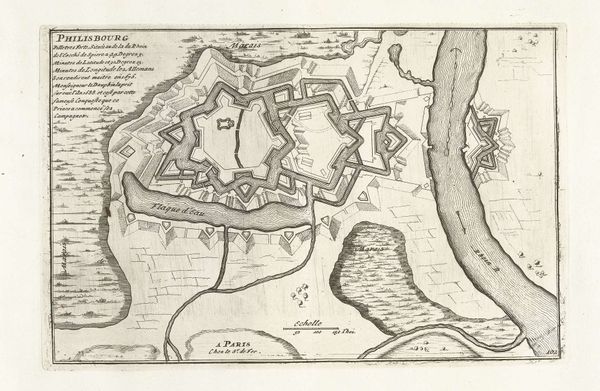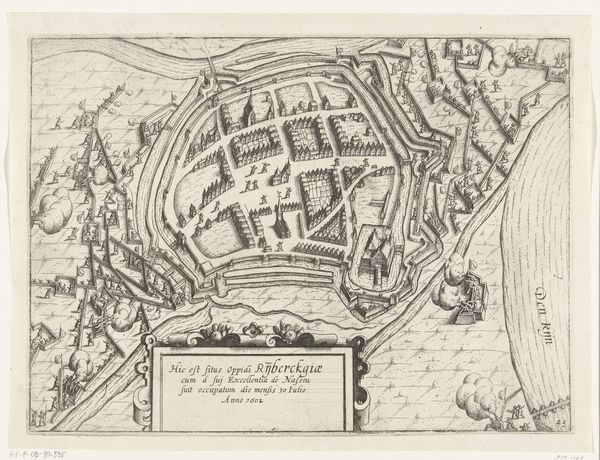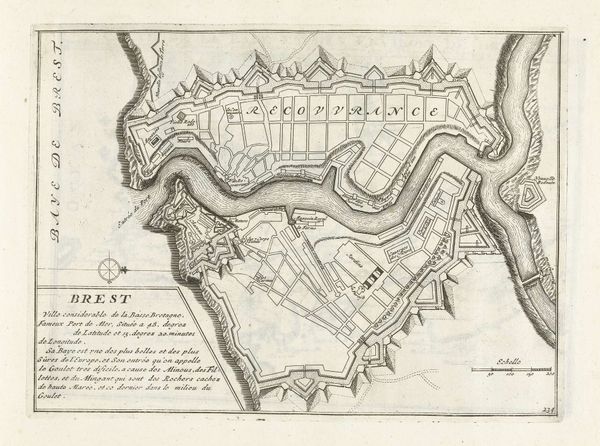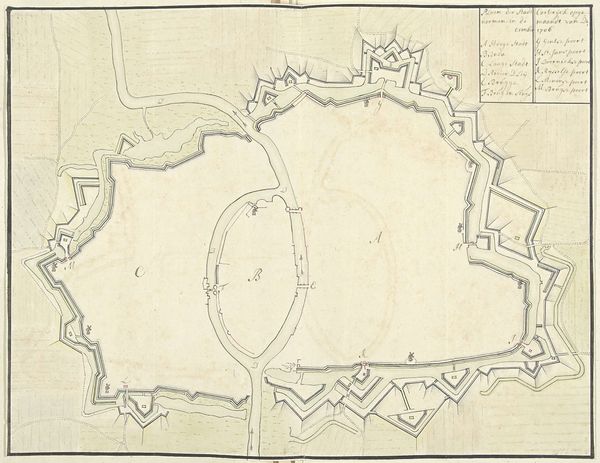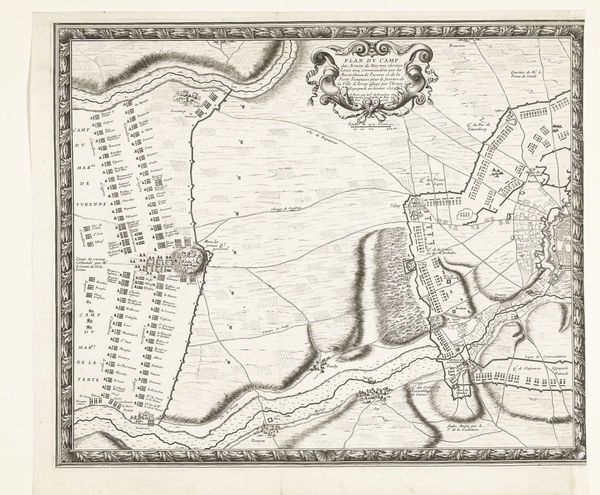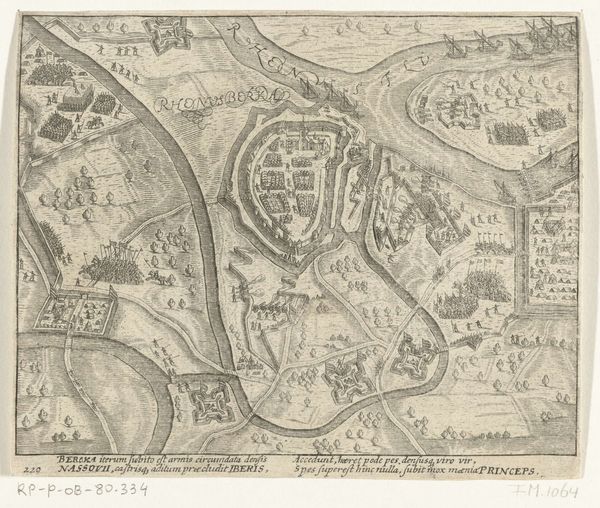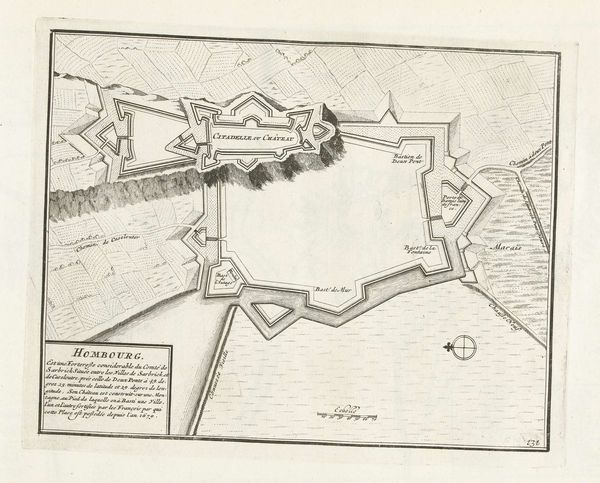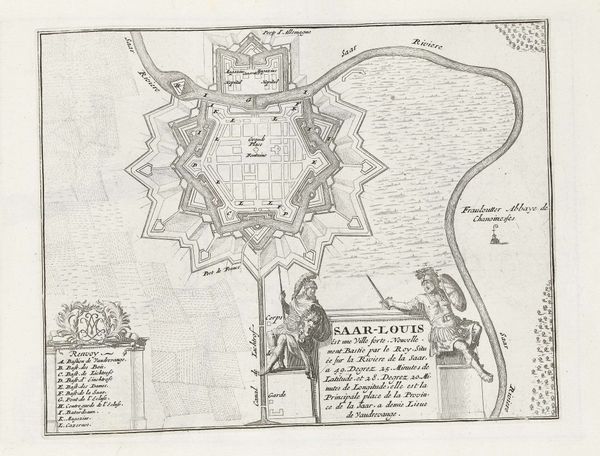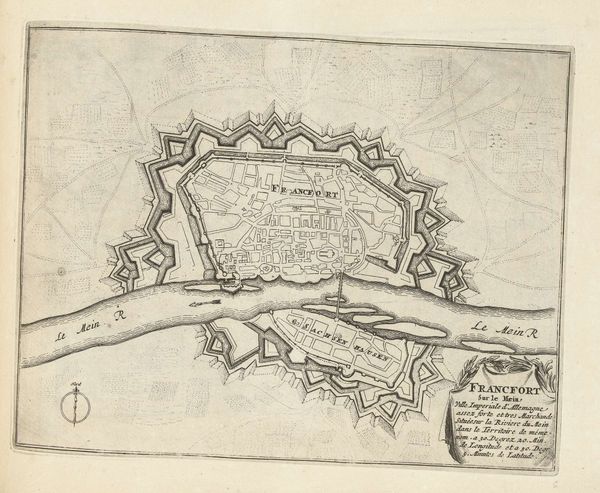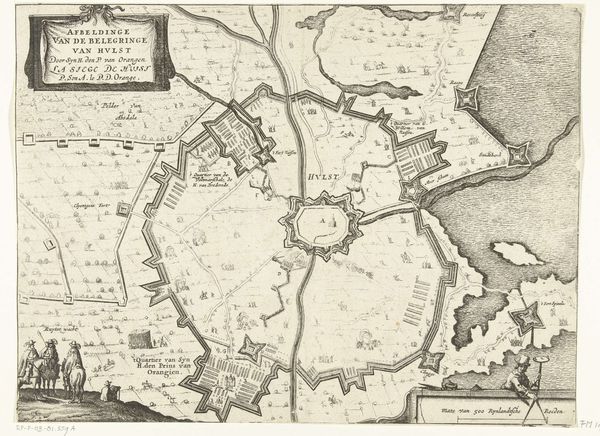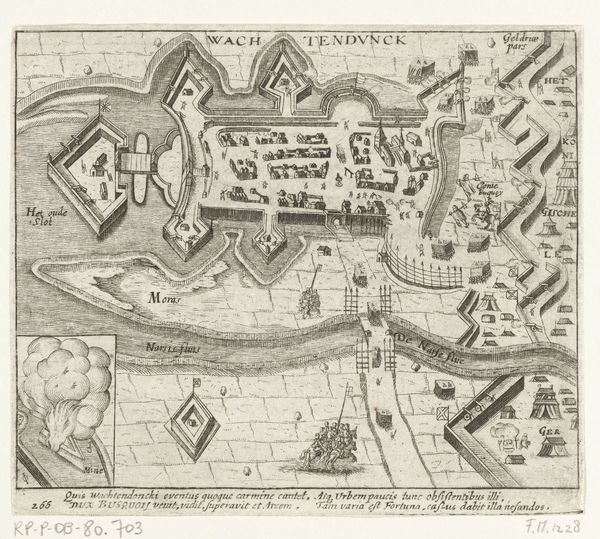
drawing, paper, ink
#
drawing
#
baroque
#
paper
#
ink
#
geometric
#
history-painting
Dimensions: height 202 mm, width 268 mm
Copyright: Rijks Museum: Open Domain
Curator: Look at this beautiful "Plattegrond van Valenza," or map of Valenza. Dating from approximately 1693-1695, this ink drawing on paper gives a bird's-eye view of the town, meticulously rendered. Editor: My immediate impression is one of strategic vulnerability. The neat lines of the fortifications belie a city perpetually under threat, evidenced by the artist’s focus on geometric defenses and the river. It speaks volumes about the era's geopolitics. Curator: Precisely! It underscores the material necessities that shaped such artistic endeavors. The very production of this detailed map implies a specific purpose – perhaps military intelligence or urban planning. This wasn't created for pure aesthetic enjoyment, although it's now displayed as such. Editor: I see it more broadly. Maps are never neutral. They are instruments of power. Representing Valenza through this strategic, defensive lens likely reflects anxieties of the ruling classes, and it reveals who the mapmaker intended the audience to be and, likely, not be. Were the citizens empowered or subjugated by it? Curator: An excellent point about its intended audience! We can assume that someone likely commissioned this map; how might that person have defined utility? Consider the specific craft required to produce this; did this represent considerable skill on the part of the craftsman, thereby potentially elevating its status from simple cartography? Editor: This leads me to question whose history we are truly seeing. The elegant, almost clinical depiction obscures the human cost of constant siege and defense, and does this erase Valenza's communities and everyday existence for political strategizing? Is the real story about the people inside those walls missing from the page? Curator: Perhaps the artistic choices made about medium are more pertinent. What inherent qualities of ink on paper render this drawing significant? We could explore the paper-making practices of the time. What local resources played a part? Editor: I feel it speaks to something profound about the enduring tension between vulnerability and resilience within a community shaped by the very landscape they inhabit. How are those power dynamics mirrored even today? Curator: Interesting. Seeing it through the lens of contemporary resonance really does broaden its scope, I agree. Editor: Indeed, a layered reading reveals hidden complexities.
Comments
No comments
Be the first to comment and join the conversation on the ultimate creative platform.
